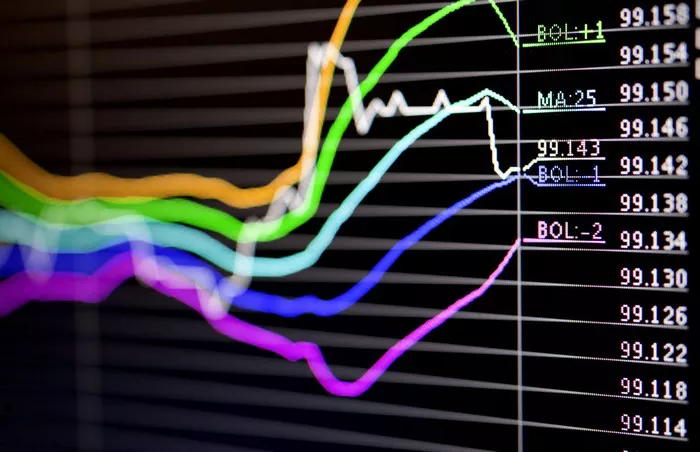High-risk funds represent a subset of investment vehicles characterized by their propensity for significant fluctuations in value. These funds typically pursue aggressive investment strategies, aiming for high returns but carrying elevated levels of risk. Investors drawn to high-risk funds often seek potentially lucrative opportunities, albeit at the cost of increased volatility and uncertainty.
Types of High-Risk Funds
Hedge Funds
Hedge funds are perhaps the quintessential example of high-risk investment vehicles. These privately pooled funds employ a diverse range of strategies, including leveraging, short-selling, and derivatives trading, to generate returns. While hedge funds can offer substantial rewards, their complex strategies and lack of regulatory oversight contribute to their inherently high-risk nature.
Leveraged Funds
Leveraged funds amplify their exposure to underlying assets through borrowed capital, magnifying both potential gains and losses. These funds employ financial instruments such as options, futures, and margin trading to leverage their investment positions, heightening volatility and risk. While leverage can enhance returns in favorable market conditions, it also exacerbates losses during downturns, making leveraged funds a high-risk proposition.
Sector-Specific Funds
Sector-specific funds concentrate their investments within a particular industry or sector, such as technology, healthcare, or energy. While these funds offer targeted exposure to high-growth sectors, they also carry elevated risks associated with industry-specific factors such as regulatory changes, technological disruptions, and market cycles. Investors in sector-specific funds must carefully assess the inherent risks and opportunities within their chosen sectors.
Risk Factors
High-risk funds are exposed to a multitude of risk factors that can significantly impact their performance and stability:
1. Market Risk: High-risk funds are particularly susceptible to fluctuations in broader market conditions, as their aggressive strategies amplify the impact of market movements on portfolio returns.
2. Liquidity Risk: These funds may invest in illiquid assets or employ complex trading strategies that can impede their ability to buy or sell positions quickly without incurring substantial costs.
3. Cash Flow Risk: Cash flow volatility can pose challenges for high-risk funds, especially those reliant on short-term funding or margin requirements. Sudden cash outflows or margin calls can force fund managers to liquidate positions at unfavorable prices, exacerbating losses.
Risk Measurement
Quantifying and managing risks in high-risk funds require sophisticated analytical tools and methodologies:
1. Value-at-Risk (VaR): VaR measures the maximum potential loss a fund could incur within a specified confidence interval over a given time horizon. While VaR provides a useful snapshot of downside risk, it may underestimate tail risks and fail to capture extreme events adequately.
2. Liquidity-Adjusted VaR: This variant of VaR incorporates liquidity constraints into risk assessments, accounting for the impact of illiquidity on portfolio performance. By adjusting for liquidity risk, fund managers can better assess the true downside potential of their investments.
3. Cash Flow-at-Risk Models: Cash flow-at-risk models evaluate the sensitivity of a fund’s cash flows to various market scenarios, helping managers anticipate liquidity needs and manage cash reserves effectively.
Historical Performance
Examining the historical performance of high-risk funds offers valuable insights into their potential rewards and pitfalls:
Historically, high-risk funds have exhibited periods of exceptional gains during bull markets, fueled by aggressive investment strategies and favorable market conditions. However, these periods of euphoria are often punctuated by sharp reversals and substantial losses during market downturns or adverse events.
For instance, during the global financial crisis of 2008, many hedge funds suffered catastrophic losses as credit markets seized up and asset prices plummeted. Conversely, periods of economic expansion and technological innovation have propelled the performance of certain high-risk funds, leading to outsized returns for investors.
Investor Profile
Investors attracted to high-risk funds typically possess a higher risk tolerance and a willingness to accept heightened levels of volatility in pursuit of potentially lucrative returns. These investors may include institutional entities such as pension funds, endowments, and sovereign wealth funds, as well as high-net-worth individuals seeking diversification and alpha generation.
Regulatory Considerations
Regulatory oversight of high-risk funds varies significantly across jurisdictions, with some regions imposing strict regulations to protect investors and maintain market integrity. In the United States, for example, hedge funds are subject to regulatory scrutiny under the Securities Act of 1933 and the Investment Company Act of 1940, while leveraged funds may fall under the purview of the Securities and Exchange Commission (SEC) or the Commodity Futures Trading Commission (CFTC).
Risk Management Strategies
Effectively managing the risks inherent in high-risk funds requires a proactive approach and robust risk management framework:
1. Diversification: Diversifying across asset classes, regions, and investment strategies can help mitigate idiosyncratic risks and reduce portfolio volatility. By spreading risk exposures, investors can enhance the resilience of their portfolios against adverse market movements.
2. Dynamic Risk Measures: Employing dynamic risk measures that adapt to changing market conditions can enhance risk management effectiveness. By continuously monitoring risk exposures and adjusting portfolio allocations accordingly, fund managers can mitigate downside risks and capitalize on emerging opportunities.
Conclusion
In conclusion, high-risk funds represent a double-edged sword, offering the promise of outsized returns alongside heightened levels of volatility and uncertainty. While these funds can serve as valuable tools for sophisticated investors seeking to enhance portfolio diversification and alpha generation, they require careful navigation and rigorous risk management to mitigate potential downsides. By understanding the characteristics, risk factors, and regulatory considerations associated with high-risk funds, investors can make informed decisions and navigate the complex landscape of high-risk investing with confidence.


